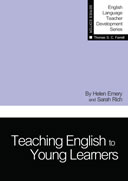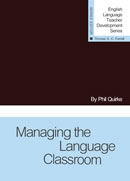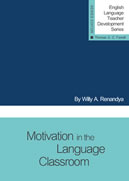Quick Tip: Common Collocations Through "Top 40" Lyrics
by Clarissa Codrington and Trisha Dowling
Audience: Teachers of middle school, high school, or adult ESL
Have you ever wanted to teach your students what clichés are? Recognizing and understanding clichés can improve English communication and cultural familiarity. Why not make it fun and teach them through popular music? The following tips are for teachers interested in incorporating “top 40” songs into their lessons in order to make a connection between commonly overused phrases and today’s popular music.
Many teachers have at some point used music in their lessons, but sometimes it may be difficult to make the connection between your English classroom and popular song lyrics. There are many benefits of using music to teach various aspects of the English language. According to Abbott (2002), one motive for utilizing music is that “song lyrics use rhyme, and rhyming is fun. Therefore, singing, performing, and listening to music are often associated with play, happiness, and relaxation. Evidently then, music activities have the power to move, excite, and soothe learners in the language classroom” (p. 10).
If you enjoy pop music, you can take advantage of its predictability by teaching lyrical collocations. We often hear the same groupings of words in pop songs. This can be used to the advantage of your students. Being able to anticipate what the next words will be can help them sing along with songs, while also practicing pronunciation, listening, and prediction skills.
Here are some suggestions to incorporate the lyrics of top 40 songs to teach collocations:
Step 1: Provide Examples
Provide students a list of common song collocations. Some examples include:
girl/world
fine/mind
beat/feet
high/sky/fly
seem/dream
baby/maybe/crazy
friend/end
see/me
heart/apart
all/fall
Step 2: Present Songs
Present examples of these collocations being used in top 40 songs. Some recently popular examples of top 40 hits are:
Taylor Swift: “Shake It Off” (feet/beat; stay/say)
Maroon 5: “Maps” (all/fall; you/do)
Coldplay: “A Sky Full of Stars” (heart/apart; you/view)
Step 3: Activities
- Create a cloze activity in which students anticipate the possible collocations. This can be done with songs that students have heard of, or some that are new to them.
- Play a game where students listen to a song, pause the song after the first line of a set of lines, and then guess whether or not the artist will use the second part of the collocation or if they will use another word.
- Have students be creative and write their own song lyrics using the common song collocations listed in Step 1.
- Use students’ L1. Have them translate common English collocations and lyrical rhymes into their first language and compare.
Reference
Abbott, M. (2002). Using music to promote L2 learning among adult learners. TESOL Journal, 11, 10–17.
___________________
Clarissa Codrington and Trisha Dowling are recent graduates of the MA TESOL program at Eastern Michigan University. They are currently teaching adult ESL at Language Center International in Southfield, Michigan. Both Clarissa and Trisha have experience teaching adults and adolescents in Michigan and abroad.
TESOL Blogs
Interested in writing a blog for TESOL?
Contact
Tomiko Breland with your idea or for submission details.
Check out the latest TESOL Blogs:
|
Be a Super Teacher With Simple Tech Tools, by Tara Arntsen
 A SMART Board training session I recently attended quickly turned into a great collaborative discussion about classroom tools. Super Teacher Tools was one such promising resource that was mentioned, and it is my pleasure to share it with you today. Super Teacher Tools’ tagline is ‘Teaching is hard. Technology Shouldn’t Be,” and while I do not know if everyone would agree with that first part, I think we can all agree with the second half, so it is just wonderful that resources like this exist. A SMART Board training session I recently attended quickly turned into a great collaborative discussion about classroom tools. Super Teacher Tools was one such promising resource that was mentioned, and it is my pleasure to share it with you today. Super Teacher Tools’ tagline is ‘Teaching is hard. Technology Shouldn’t Be,” and while I do not know if everyone would agree with that first part, I think we can all agree with the second half, so it is just wonderful that resources like this exist.
It is easy to create an account and the site is free to use, but donations are accepted to help fund it. There are three main categories that teachers will find useful: games, tools, and extras. Read More. |
|
Four Tips for Teaching English Through Music, by Judie Haynes
 One effective method of teaching language to your ELs is through music and songs. It is remarkable how quickly children pick up words and sentences and remember them for a long time when music is integrated into a lesson. One effective method of teaching language to your ELs is through music and songs. It is remarkable how quickly children pick up words and sentences and remember them for a long time when music is integrated into a lesson.
Here are four tips for teaching language through music to Pre-K–5 ELs.
Provide comprehensible input through music. This can be accomplished when teachers preteach the key vocabulary in a song and provide visual support of this vocabulary when the song is sung. This can be done through realia, drawings, pictures, and photographs. Read More. |
|
New Year Resolutions: More Classroom Activities, by Elena Shvidko
 New Year is a perfect time to set new goals and make personal promises. Perhaps at least once in our life, each of us makes New Year resolutions. And I believe it’s not just a cultural concept—most people consider New Year a new step in their lives, and naturally, many of us look forward to an upcoming year with motivation and determination. New Year is a perfect time to set new goals and make personal promises. Perhaps at least once in our life, each of us makes New Year resolutions. And I believe it’s not just a cultural concept—most people consider New Year a new step in their lives, and naturally, many of us look forward to an upcoming year with motivation and determination.
Because New Year resolutions are something that many people know about and do, why not use them in our teaching? Last year, I shared several activities that teachers can implement in their writing classes. I thought maybe I could add a few ideas to that list, so here they are. Read More.
|
|
USA Learns: A Web-Based Tool for Self-Directed Learning, by Alexandra Lowe
 Many students like to be able to log into a computer program on their laptop, tablet, or smart phone to practice their English online outside of class. Here’s a free resource that every ESL teacher should know about: USA Learns, www.usalearns.org. Many students like to be able to log into a computer program on their laptop, tablet, or smart phone to practice their English online outside of class. Here’s a free resource that every ESL teacher should know about: USA Learns, www.usalearns.org.
USA Learns is a free website funded by the U.S. Department of Education for immigrants who want to improve their listening, speaking, pronunciation, grammar, writing, and spelling skills. However, because it is Internet-based, it is available to adult ELLs anywhere in the world. It is a great resource for self-directed learners as well as for teachers who want to give their students extra practice opportunities outside of class. Read More. |
TESOL Bookstore

Featured Resources from TESOL Press
Spotlight on the English Language Teacher Development Series from series editor, Thomas S. C. Farrell
 Teaching English to Young Learners
Teaching English to Young Learners
By Helen Emery and Sarah Rich
This text helps guide teachers as they work with students from preschool to the lower reaches of secondary schooling, with a focus on children in Grades K through 6. Emery and Rich provide specific tasks, strategies, and activities to show you how to establish the kind of reflective teaching that helps your students develop fluency and accuracy in the English language.
 Managing the Language Classroom
Managing the Language Classroom
By Phil Quirke
This book introduces a practical, fresh approach to classroom management which discusses 10 principles to ensure students remain at the heart of a structures, practical and effective classroom. Learn how to unpack the complexity behind a teacher's daily classroom work and channel tacit knowledge into a well-designed, productive learning environments.
 Motivation in the Language Classroom
Motivation in the Language Classroom
By Willy A. Renandya
This book discusses the five elements of motivation—the teacher, teaching methodology, the text, the task, and the test—and explores how to use these "5 Ts" to impact student motivation.